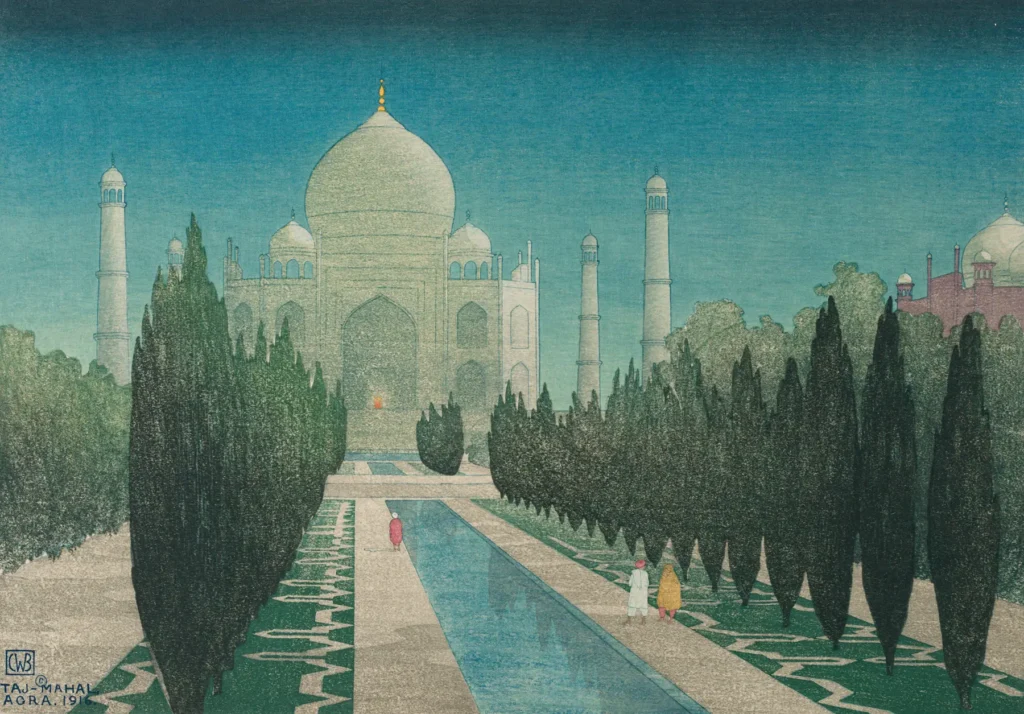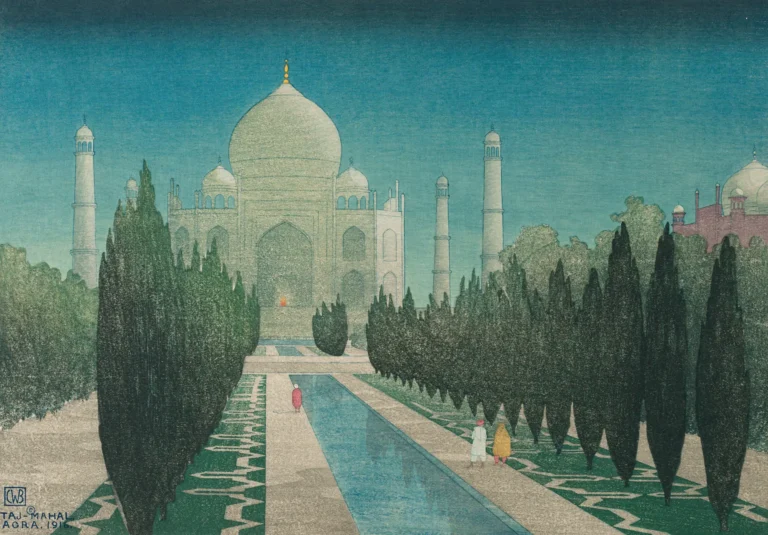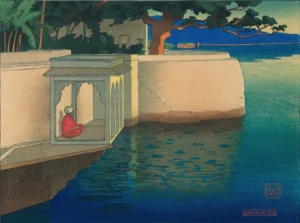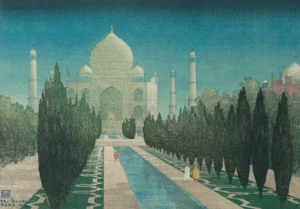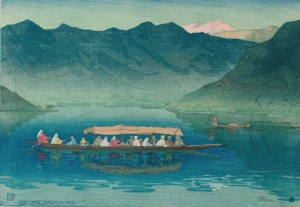Taj Mahal, Agra (1916)
Charles William Bartlett's Taj Mahal, Agra is a beautiful color woodcut created in 1916 that captures the iconic Indian mausoleum with a romantic flair. The artwork stands as a testament to Bartlett's travels across Asia, notably influenced by his engagement with Japanese woodblock printing techniques. This piece harmoniously blends Bartlett's unique style and his admiration for the monumental beauty of the Taj Mahal, revealing intricate details and atmospheric depth.
Year 1916
About the Artwork
Created during a significant global expedition in 1913, Charles William Bartlett's Taj Mahal, Agra reflects his deep admiration for the landmark and the influence of his travels in Asia. After arriving in Japan, Bartlett formed a pivotal collaboration with Watanabe Shozaburo, a leader in the Shin Hanga movement. This partnership allowed him to produce a series of exquisite woodblock prints that elegantly merged his experiences in India with traditional Japanese techniques. The captivating imagery of the Taj Mahal under a full moon exemplifies Bartlett's ability to convey emotional resonance and striking beauty through printmaking. His time in Hawaii further solidified his legacy as a passionate and revered artist until his passing in 1940.
Did You Know
Charles William Bartlett transitioned from a background in metallurgy to a celebrated artist known for his innovative woodblock prints, showcasing the beautiful landscapes he encountered during his travels.
The Shin Hanga movement, which promoted the blending of traditional Japanese printmaking with Western artistic styles, significantly influenced Bartlett’s work, notably during his collaboration with publisher Watanabe Shozaburo.
The Taj Mahal, a UNESCO World Heritage Site, embodies the peak of Mughal architecture and is widely recognized as a symbol of love, making it a popular subject for artists, including Bartlett, throughout the years.




